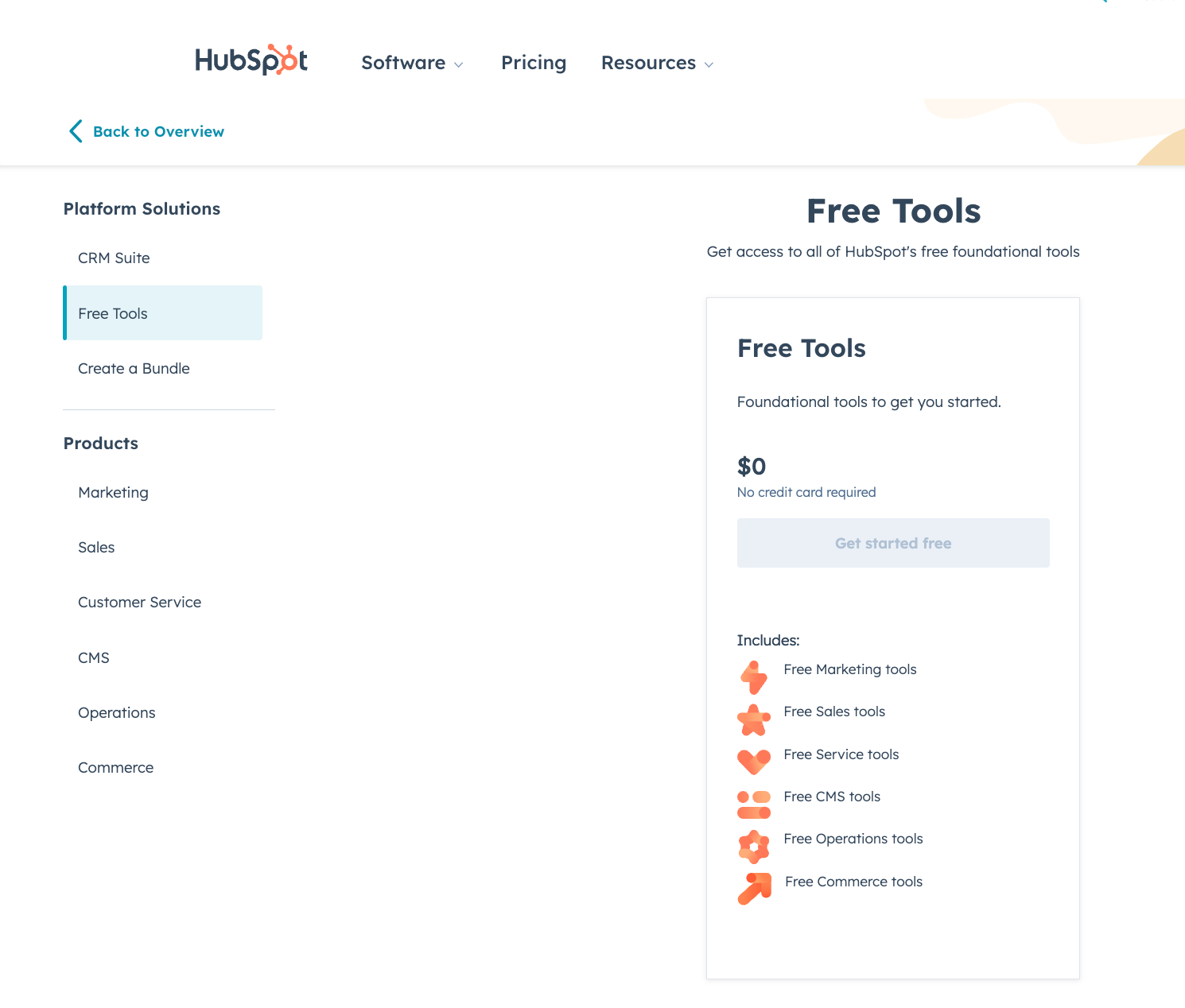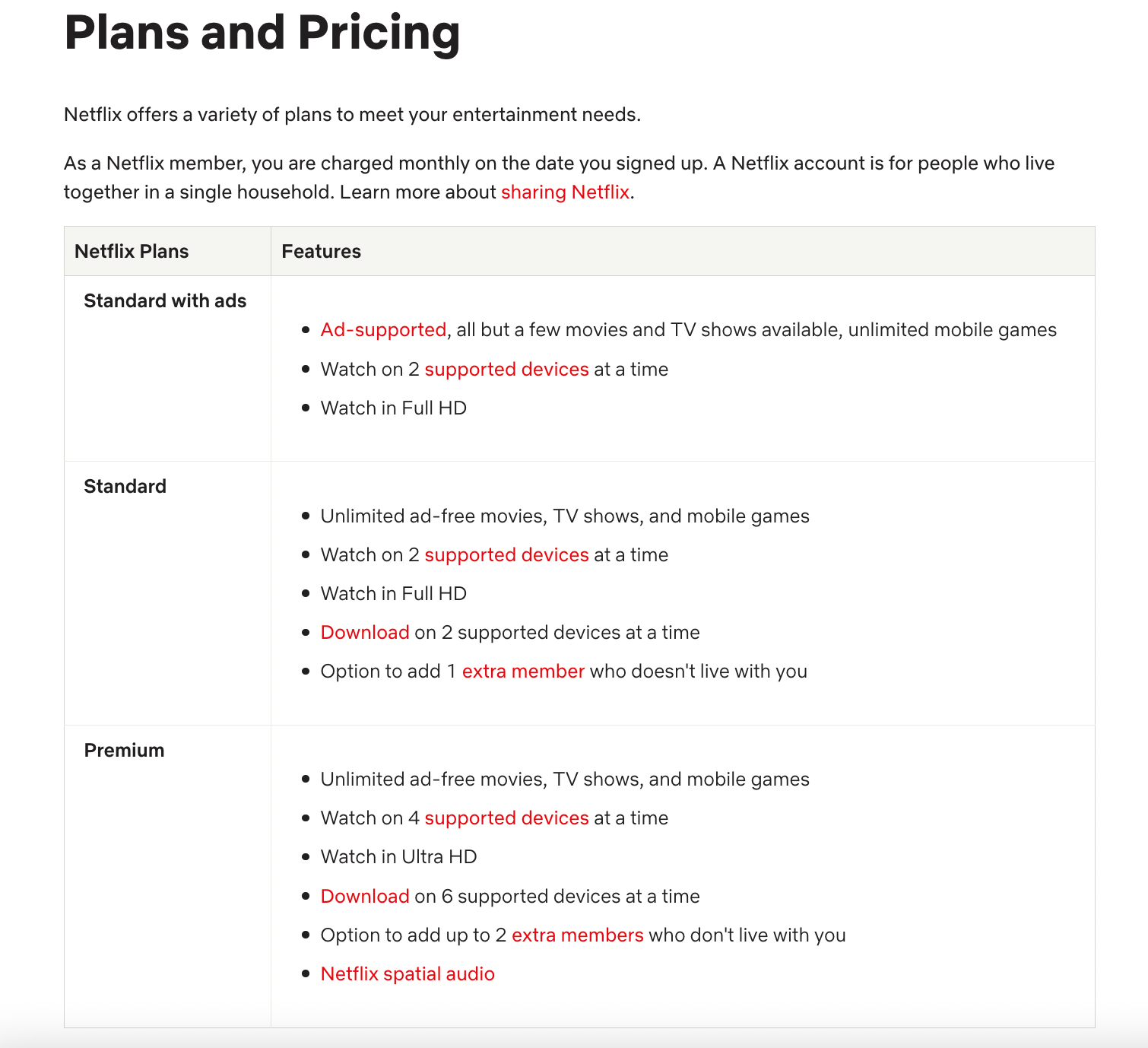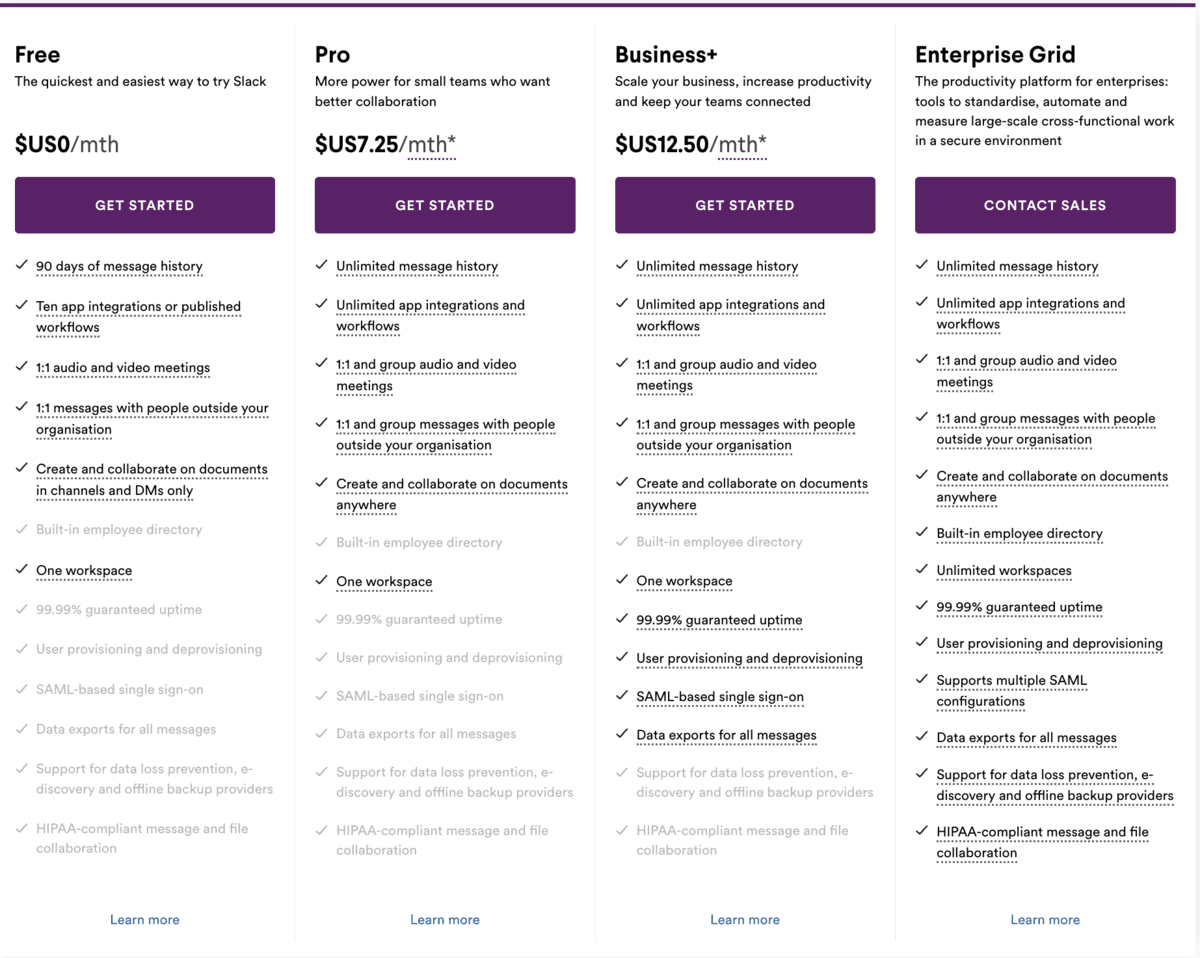Table of Contents
One thing that a business has to be very tactful about is the pricing strategy. It should neither be too low nor too high. Setting an optimum price for the product involves the consideration of many aspects.
While there are many methodologies of pricing, the one you choose must be suitable to your business. Let us delve deeper to understand the various types of pricing and how a business should decide its pricing strategy.
What is a pricing strategy?
A pricing strategy is a methodology used to determine the best price at which a product or service can be sold. It is one of the main components of marketing and helps balance business revenues and customer demand.
Pricing strategy is not just fixing the price. Several market factors like competition, willingness of customers, expenses incurred, etc., play an important role while formulating a pricing strategy.
6 Types of pricing strategies
There are many ways of devising a pricing strategy. We have listed some here:
1. Competition-based strategy
When businesses place their pricing decisions on competitors’ prices instead of the cost of the product or its demand, it is a competition-based pricing strategy. They either fix the price slightly above or below the competitors’ price.
In such cases, competition is intense, and even this slight increase/decrease can significantly impact revenues.
2. Dynamic pricing
Also called the surge pricing method, this is based on the demand and market conditions. This is mainly used in the hotel and travel industry. It is used in cases where customers are ready to pay a higher price because of the need.
It is fixed by applying algorithms that help identify surge pricing.
3. Skimming
In this kind of pricing strategy, businesses fix higher prices when a new product is introduced. The prices are lowered over time when the product’s demand is reduced.
Smartphones are the best examples where skimming is applied. Skimming strategy should also be based on the lifecycle of the product to avoid frequent changes in prices.
4. Cost-plus pricing
This is the regular pricing method followed by most businesses. A percentage of profit is added to the cost to arrive at the product price.
This kind of pricing is mostly seen for consumer goods sold by retailers. The product prices are marked-up, and so it is also called mark-up pricing.
5. Geographic pricing
In this case, products are priced based on their geographical location. Factors like the shipping cost, taxes, customers’ willingness to pay, demand, etc., determine the geographic pricing.
Market segmentation through geographic pricing helps companies to optimize their revenues.
6. High-low pricing
This is also called the discount pricing strategy. Here, products are sold at a higher price in the beginning, and when they are out of demand, prices are lowered. This is mainly the concept of retailers where seasonal sales are popular.
We see a lot of discounts and year-end sales, which are examples of high-low pricing. Prices are determined based on their demand during specific periods of the year.
7. Psychological pricing
The way prices are presented can significantly influence consumer perception. Utilize psychological pricing techniques, such as setting prices just below a round number (e.g., $9.99 instead of $10.00) or emphasizing the value of a discount ("20% off") to create a perception of greater value.
How to elevate the pricing strategy with rewards
Enhancing a pricing strategy with rewards involves refining the incentive structure to not only attract new customers but also to deepen the loyalty of existing ones. By incorporating thoughtful and strategic rewards, businesses can create a pricing strategy that not only drives initial purchases but sustains customer engagement over the long term.
1. Personalized rewards
Tailor rewards to individual customer preferences and behavior. Utilize data from past purchases and customer interactions to offer rewards that are highly relevant to each customer. This personalization not only adds value but also demonstrates a deep understanding of the customer's needs.
Personalized offers: Starbucks uses data analytics to provide personalized offers and recommendations to individual customers based on their preferences and purchase history.
Mobile App integration: The Starbucks mobile app allows customers to order and pay through their phones, earning stars for every transaction. This seamless integration enhances the customer experience and encourages mobile app usage. Free Drinks and
Customization: Rewards include free drinks, customization options, and even birthday treats. The tiered system motivates customers to earn more stars and move up to higher membership levels for enhanced benefits.
2. Surprise and delight
Introduce an element of surprise in the rewards program. Unexpected bonuses, exclusive access, or personalized gifts can create a sense of excitement and delight among customers. This unpredictability can enhance the overall customer experience and foster positive feelings towards the brand.
3. Multi-tiered rewards
Develop a multi-tiered rewards system with escalating benefits. As customers progress through different levels, they unlock more significant rewards. This tiered structure encourages continued engagement and spending as customers strive to reach the next level and enjoy enhanced benefits.
Travel credits: Airbnb offers travel credits as a reward for both booking and hosting. These credits can be applied towards future bookings, providing customers with a tangible incentive to choose Airbnb for their accommodation needs.
Loyalty tiers: Airbnb has introduced a tiered system that rewards frequent users with additional perks and benefits. As users progress through the tiers, they unlock advantages such as priority customer support, exclusive experiences, and even discounts on future bookings.
Special promotions: Airbnb periodically runs special promotions and challenges where users can earn bonus rewards or discounts for completing specific actions, such as booking a certain number of nights or trying new experiences.
4. Partnering for rewards
Collaborate with other businesses to expand the range of rewards. Partnering with complementary brands allows customers to redeem points for a variety of products or services, broadening the appeal of the rewards program and catering to diverse customer interests.
5. Gamification elements
Incorporate gamification elements into the rewards system. Challenges, competitions, and interactive activities can make the accumulation of points more engaging. This not only encourages participation but also fosters a sense of achievement and friendly competition among customers.
6. Limited-time offers
Introduce time-sensitive promotions where customers can earn bonus points or exclusive rewards for a limited period. This creates a sense of urgency, prompting customers to make quicker decisions and driving short-term spikes in sales.
7. Social recognition
Offer rewards that provide social recognition, such as exclusive badges, member-only events, or shout-outs on social media platforms. Connecting rewards to social status can motivate customers to actively participate in the program and showcase their loyalty to the brand.
8. Feedback-based rewards
Encourage customers to provide feedback and reviews by offering rewards in return. Positive reviews can be rewarded with bonus points, creating a positive cycle where satisfied customers are further motivated to engage with the brand.
9. Sustainability rewards
Appeal to eco-conscious consumers by incorporating rewards that align with sustainable practices. This could include discounts on eco-friendly products, tree planting initiatives, or donations to environmental causes on behalf of the customer.
10. Continuous communication
Regularly communicate with customers about their reward status, upcoming promotions, and new rewards. Keeping customers informed and engaged ensures that the rewards program remains top-of-mind and encourages ongoing participation.
Incorporating these enhancements into a pricing strategy with rewards can create a dynamic and compelling customer loyalty program. By consistently providing value, personalization, and unique experiences, businesses can build strong, lasting relationships with their customer base.
5 Techniques for effective product pricing
While there are several methods of pricing, your strategy can be effective only when you adopt certain techniques. Let us learn some of them here:
1. Determine your audience
Your pricing strategy depends on the type of audience your business has. So first, identify your buyer persona. Understanding your buyer will help you learn what they like about your product and how much they are willing to pay for the same.
Your sales team should conduct extensive research to find out the pain points your buyers want addressed. Businesses should segment the customer base on the basis of their willingness to pay. Some buyers are price-sensitive, while others may be willing to pay more for better quality or a specific feature.
Businesses can maximize their revenues by personalizing pricing based on the buyer groups.
2. Evaluate the pricing potential
You should determine the pricing potential for your product/service. The prices should be profitable, suitable for the customer, and competitive as well. All these should be considered while fixing the prices.
Pricing potential can depend on factors like:
- Demand fluctuations
- Market segmentation
- Cost
- Market trends
- Geography
- Demography
- Competition
- Business goals
- Lifecycle of the product
Ultimately, pricing should be a win-win for both the business and the customers.
3. Research and analyze past data
Pricing strategies you had adopted previously can give insights into deciding on the best price. It is an analysis of how well the earlier strategies worked, what type of pricing method was used, how the reception was with the customers, etc.
It will provide information on the different strategies that worked for your brand previously and whether the same can be adopted at present. This is an effective strategy that can be used as it gives details on successful methods and not-so-successful ones.
4. Balance profitability and customer satisfaction
Though pricing may seem simple, it is a delicate task since you have to maintain a balance between your customers and the business. Your prices should be welcome by the customers and, at the same time, should help you improve your ROI.
For example, the skimming strategy can earn good profits for the business but can displease the customers who had purchased the same product at the initial higher prices. They may feel cheated, and this can lower customer satisfaction.
5. Analyze competitors’ pricing
Competition plays a great role in determining the price of your product. Extensive research and analysis of the market will help you identify trends and competitor pricing. You may either fix a lower or higher price than the competitor. But when offering at a higher price, you should be able to justify a higher value of the product for the price paid.
Market analysis will guide you on how competitors succeeded in their pricing strategy and whether similar techniques can be employed in your business too.
4 Pricing strategy examples from brands
Here are some examples of how brands created their pricing strategy:
1. HubSpot: Freemium pricing
Freemium is a combination of words, free and premium. You must have observed that most subscription models follow this kind of plan. There is a free basic plan and a premium plan that comes with additional features.

HubSpot offers a CRM platform with a free version and a premium plan with extra features. With the free version, customers can understand the brand to know if it is suitable for them, before moving to paid plans.
2. Netflix: Penetration pricing
Netflix serves as a compelling illustration of how market penetration pricing can be used to outpace significant competitors. During the late 1990s and early 2000s, DVD rentals were gaining popularity. Even though Blockbuster was the reigning champion in the home entertainment sector, it was infamous for its late return fees and restricted movie choices.

Enter Netflix with a distinct offering. Customers who didn't mind waiting a couple of days for their DVDs could enjoy a more extensive movie collection without the worry of late fees. From its inception, Netflix underscored its convenience and cost-effectiveness to lure away Blockbuster's clientele.
Back in 2000, for a subscription fee of $15.95, Netflix patrons could rent up to four movies simultaneously without a set return deadline. This pricing meant that avid movie enthusiasts could rent DVDs for roughly $1 each, in contrast to Blockbuster's $4.99 for a single rental spanning three days.
Thanks to its penetration pricing strategy combined with its novel approach, Netflix experienced a surge in its user base and reported profits in 2003, a mere five years after its launch.
This attractive initial pricing allowed potential users to try out Netflix and eventually make the shift. Fast forward to 2007, and Netflix introduced its game-changing online streaming platform, further solidifying its position. Intense rivalry from Netflix and the emerging Redbox played a pivotal role in Blockbuster's declaration of bankruptcy in 2010.
3. Slack: Value-based pricing
Slack offers value-based pricing with a range of features that are of value to various kinds of businesses. Value-based pricing is done when brands fix prices based on the customers’ willingness to pay based on the value they associate with the product/service.

Slack offers Pro, Business+, and enterprise grid plans with several different features like Google Drive integration, HIPAA Compliance support, encryption key management, etc.
4. Amazon vs. Walmart : Competitive pricing
Amazon and Walmart consistently recalibrate their prices to secure their competitive positions. A prime example of their competitive pricing strategy is their use of dynamic pricing algorithms. These sophisticated systems enable the companies to modify product prices instantly, influenced by variables like demand, stock levels, and the pricing strategies of competitors. This tactic has intensified the pricing wars, with both giants continually vying to offer the best deal.
Here's a snapshot of research insights that underline the outcomes of these competitive pricing efforts:
- A 2020 survey by Digital Commerce 360 revealed that 67% of US consumers often choose Walmart due to its competitive pricing, while 59% expressed a similar preference for Amazon.
- Jungle Scout's 2021 analysis showed that Walmart's prices were typically about 4% less than those of Amazon when comparing identical items across ten key categories.
- Profitero's 2019 research indicated that Walmart's online pricing was closing in on Amazon's, with a mere 3% difference. Amplifying this competition, Walmart aggressively matched Amazon's prices on 53% of consumer packaged goods (CPG) and even more impressively, on 67% of grocery items.
Wrapping up
Pricing strategies are not one-size-fits-all. Understand and analyze the market conditions well, and you could ace with a good strategy suitable for your business.
Crafting a pricing strategy that maximizes profits is a delicate balance between understanding your costs, knowing your market, and adapting to changing dynamics. By implementing a well-thought-out pricing strategy that considers the various factors influencing consumer behavior and market conditions, you can not only optimize your profitability but also enhance the perceived value of your products or services in the eyes of your customers.





